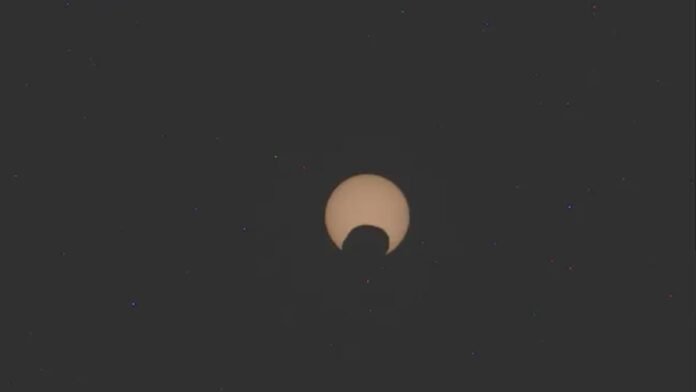On 30 September 2024, NASA’s Perseverance rover became its Mastcam-Z digicam against the Martian sky, shooting a noteceable view of Phobos, Mars’ mini, irregularly fashioned moon, because it handed in entrance of the Solar in a bias eclipse. This tournament, seen on what scientists the following as Sol 1285 of the challenge, showcased the shadowy define of Phobos—a potato-shaped rock—highlighted towards the Solar’s glorious disk.
A Distinctive View of Mars’ Potato-Formed Moon
Not like Earth’s round moon, Phobos has a distinctly abnormal mode, carefully akin to an asteroid. Spanning about 17 by means of 14 by means of 11 miles, it follows a singular, elliptical orbit round Mars at a trifling 3,700 miles from its floor. By way of comparability, Earth’s Moon is just about 239,000 miles away, making Phobos appear extremely akin to Mars. Its proximity and fast orbit permit it to circle Mars 3 times day-to-day, developing prevalent however temporary eclipse alternatives for Martian witnesses.
Tracing the Origins of Phobos
The starting place of Phobos rest a thriller in planetary science. Day its look hints at an asteroid, many researchers consider Mars’ gravity didn’t seize Phobos however in lieu can have shaped along the planet or within the aftermath of a tremendous affect tournament. The just about highest orbit that Phobos maintains round Mars is without doubt one of the primary causes scientists have inclined clear of the asteroid seize principle, as captured our bodies ceaselessly showcase abnormal orbits.
Perseverance’s Persevered Commentary of Martian Eclipses
This isn’t the primary hour Perseverance has seen Phobos’ transit. The rover has in the past photographed matching eclipses in April 2022 and February 2024. Alternative Mars rovers, similar to NASA’s Spirit and Alternative, captured photographs of Phobos eclipses in 2004, and Interest recorded this tournament in 2019.


